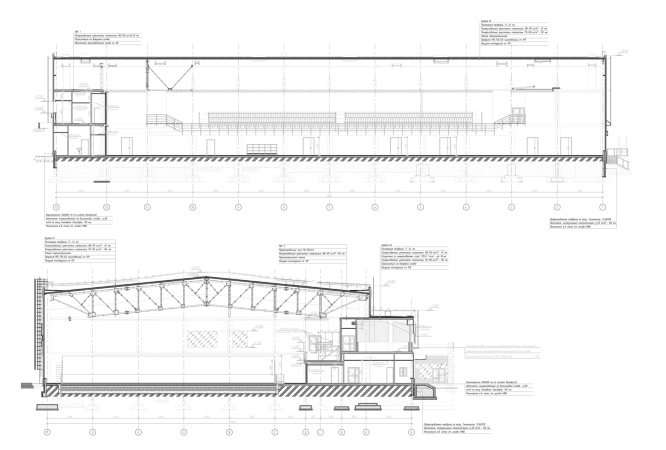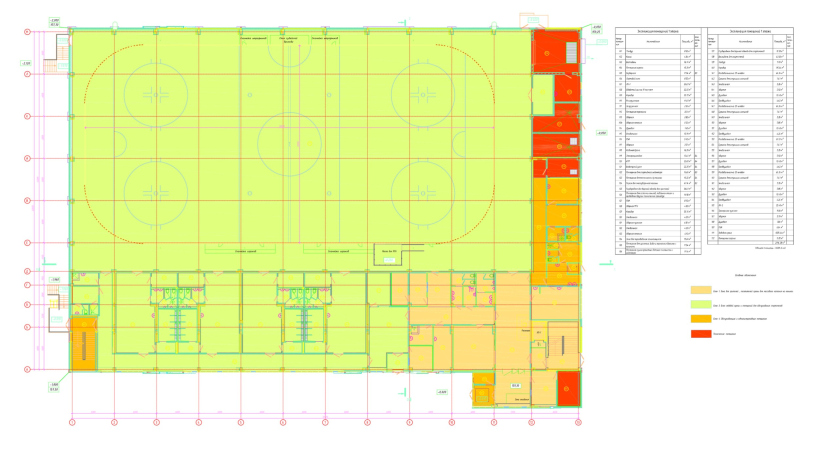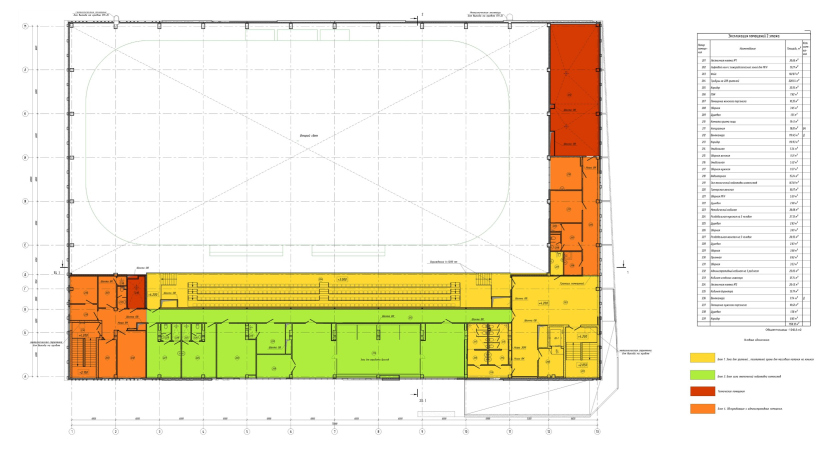Within the block bounded by 1st and 2nd Kommunisticheskaya Streets, a football stadium with stands for 6,000 people, heated turf, and a track and field core has already been renovated. Nearby, the first indoor arena with a full-size football field in the Moscow region was recently commissioned. There is also a skate park, a multi-purpose wrestling hall, a swimming pool, and several parking islands. Back in 2014, a small park was opened in time for the 2014 Olympic Games. The ice arena, designed by Yuri Vissarionov Architects, has further expanded the range of sport facilities available at “Avangard”.
A sports and recreation center with an indoor ice rink and arena
Copyright: © Vissarionov Architects
The arena is located on a vacant lot between the football stadium and the Olympic Park, separated from the latter by 3rd Moskovsky Drive. The building continues the frontage of 2nd Kommunisticheskaya Street, forming an ensemble with the grandstand complex of the football stadium.
A sports and recreation center with an indoor ice rink and arena
Copyright: © Vissarionov Architects
A sports and recreation center with an indoor ice rink and arena. Site layout planning
Copyright: © Vissarionov Architects
It’s worth mentioning that the implementation did not fully satisfy the architects: different materials were used in construction, and the entrance group was significantly altered. Therefore, our focus will mainly be on the original project.
The arena is designed for the training of hockey teams, public skating sessions, and spectacular events. The core of the building is an indoor rink with stands for 230 people, including two spots for people with limited mobility. This block is complemented by various auxiliary rooms: locker rooms, halls for practicing shots, skate sharpening and stick fitting, gear drying, and a garage for the ice resurfacing machine.
All the rooms are fitted into a rectangle with dimensions of 78 by 58 meters. Considering that the ice and the athletes’ eyes need protection from direct sunlight, the architects faced the challenge of creating long façades that had to be made more diverse… but couldn’t be varied with window openings. The solution was to use suspended structures made of metal slats, oriented both vertically and horizontally, forming a patchwork pattern of squares and rectangles. This design somewhat resembles the “Stadium 974”, built for the 2022 FIFA World Cup in Qatar using shipping containers.
A sports and recreation center with an indoor ice rink and arena
Copyright: © Vissarionov Architects
A sports and recreation center with an indoor ice rink and arena
Copyright: © Vissarionov Architects
The slats are attached to the sandwich panels cladding the walls, with the use of a subsystem. The varied angles and colors of the slats add texture to the façade and change its appearance depending on the viewer’s perspective. This technique works both up close, at eye level, and from more distant viewpoints, transforming into a form of supergraphics. Another important function of the slats is to limit the penetration of light and heat combined, which can cause the ice to melt faster.
A sports and recreation center with an indoor ice rink and arena
Copyright: © Vissarionov Architects
A sports and recreation center with an indoor ice rink and arena
Copyright: © Vissarionov Architects
The decorative façade rises above the second floor level and covers the roof – a polymer membrane with a slight tilt that prevents precipitation from accumulating.
A sports and recreation center with an indoor ice rink and arena
Copyright: © Vissarionov Architects
This design approach is consistent across all four façades. The only interruptions are the entrance group on the side facing 2nd Kommunisticheskaya Street and a possible temporary stage structure on the opposite side, where a small plaza is organized. The paving squares, interspersed with patches of lawn, echo the façade patterns.
A sports and recreation center with an indoor ice rink and arena
Copyright: © Vissarionov Architects
A sports and recreation center with an indoor ice rink and arena
Copyright: © Vissarionov Architects
The arena reached the finals of the Sport Business Consulting Award (formerly known as the Sport Business Awards) in the “Project of the Year” category.
A sports and recreation center with an indoor ice rink and arena
Copyright: © Vissarionov Architects
















































